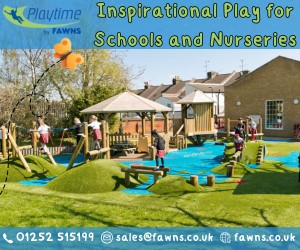When you’ve spent hours planning and running a successful event, it feels good to count the takings and tell everyone how much you raised. Publicising profits in this way enables people to see what the PTA does at a practical level, but it doesn’t explain where the money has gone or help them understand why it’s needed. Showing how the children benefitted from what the PTA funded can profoundly affect supporters’ perception of its value, leading to increased engagement.
Show and tell
Quantitative data is all about numbers. It answers the questions: how many, how often and how much? So instead of saying: ‘The PTA contributed £1,000 towards running the school swimming pool,’ you might take a different angle, for example: ‘The money you raised paid for 300 swimming lessons.’ If 15 children swam their first length this year, that’s further evidence of the difference you made.
Qualitative data is about storytelling and comes from people’s direct experiences. Hearing from the children is ideal, but their teachers will also have a story to tell. For example, have the children reported an increase in confidence as a result of their swimming lessons?
Statistics appeal to the head, while stories appeal to the heart. Be as visual as possible: presenting numbers as brightly coloured infographics and adding photos to quotes will help reinforce the message.
‘They’d never had lessons outside of school, but during the summer holidays I suddenly realised my children could swim, which meant I could relax too.’ – Kate, Year 5 mum
Work with the school
Start with something simple – an ambitious project involving multiple videos and pupil interviews may sound overwhelming.
A project like this needs a good relationship with the school and you may need to convince them of its value. Find examples of what other charities have done and show them to the headteacher or your PTA staff liaison. Ask if the school already creates any reports or information you can access. Make it clear you’ll comply with rules around permissions for photographs and quotes?
Get started
Ask a question: The next time the PTA is asked to fund something, ask what the benefits are for the children and use them in your communications.
Use images: If you’ve paid for a classroom item, ask if the teacher can take a quick photo and email it to the PTA, along with one sentence about why it’s important and how it will support learning. Include images of smiling pupils if possible.
Make a quick questionnaire: Ask teachers to answer a few questions about something you’ve already bought: What is it? Why is it useful? How do the children benefit? Did anyone say anything memorable? Leave space for a quote from the teacher and one from a pupil, but don’t insist on them. An online form might be more useful than pieces of paper.
Put it on the agenda: Ask at PTA meetings if there are any quotes from the children or statistics you can use. Stories don’t have to be lengthy – a few sentences are enough to elicit emotion.
Group things together: Take less of everyone’s time by asking for information once a term, or concentrate on more significant PTA purchases such as technology, outdoor play areas or books for the library.
Three tips for demonstrating impact
- Engage the community: Make your information public and use it to encourage support from local businesses and grant-giving trusts.
- Say it again: For anyone who missed it the first time, make a display with images of smiling children alongside stories and quotes and place it prominently at big events.
- Take it further: Once supporters gain a greater understanding of the value of your group, look into options such as regular giving or hold a volunteer drive.







